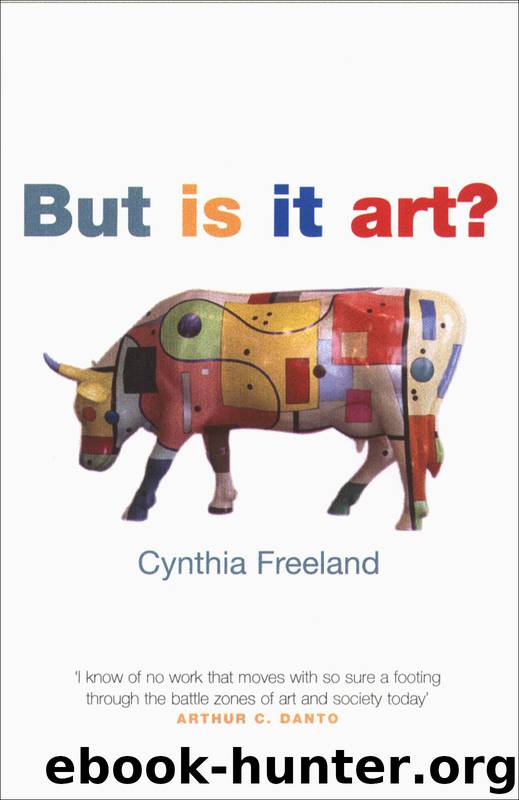But Is It Art? by Freeland Cynthia;

Author:Freeland, Cynthia;
Language: eng
Format: epub
Publisher: OUP Oxford
Published: 2012-03-14T04:00:00+00:00
16 Christo and Jeanne-Claude, Running Fence, Sonoma and Marin Counties, California, 1972–1976, exemplifies the couple’s ephemeral yet beautiful interventions in a natural landscape.
There are other models of how (not to) make money from art. American artists Christo and Jeanne-Claude make art that is deliberately transitory and cannot be sold. They travel the world, conceiving and executing huge landscape and environmental installation projects. Best known are their Running Fence (1972–1976) in California, The Pont Neuf Wrapped in Paris (1975–1985), and the gaily skirted bright pink Surrounded Islands in Miami Bay (1980–1983). In their Umbrellas project (1984–1991), carried out both in Japan (with blue umbrellas) and California (with yellow umbrellas), the couple undertook to link the natural landscapes of river and mountains not only across the two nations but also to the artificial landscapes of freeways, by making the work visible across miles. Getting permission and collaborative support becomes part of the art project, and the pair derive no income from photographs, books, posters, postcards, and films. They pay all the expenses of the project with their own money coming from the sale of preparatory drawings, collages, scale models, all created before the completion of a project.
Perhaps the strongest examples of anti-commercialism in art are Tibetan Buddhist sacred paintings done from coloured sand, not as a permanent product, nor really even as art (see Plate IV). The detailed mandalas are constructed by monks in a painstaking process over days, producing the image of a sacred scene as an aid to meditation. Once complete, the image is ritually erased and the sand scattered (preferably into a body of water) to effect cleansing and purification. The work’s impermanence epitomizes the Buddhist view of life’s transitory nature. Obviously these paintings are religious and are not done to sell a product. Still, when undertaken in a major museum, the context suggests that the project is, after all, a kind of art. Recent appearances by Tibetan sand-painters have carried clear political messages, as the monks seek to glean American or Canadian support during Tibetan repression by China. And there is also some sort of underlying financial structure at work. When I saw the monks, their room included not only altars to Buddha with flowers and incense, but also a money jar for donations to help their monastery in India and to aid Tibetan refugees.
Download
This site does not store any files on its server. We only index and link to content provided by other sites. Please contact the content providers to delete copyright contents if any and email us, we'll remove relevant links or contents immediately.
The Art of Boudoir Photography: How to Create Stunning Photographs of Women by Christa Meola(18480)
Red Sparrow by Jason Matthews(5327)
Harry Potter 02 & The Chamber Of Secrets (Illustrated) by J.K. Rowling(3604)
In a Sunburned Country by Bill Bryson(3457)
Drawing Cutting Edge Anatomy by Christopher Hart(3427)
Figure Drawing for Artists by Steve Huston(3352)
Harry Potter and the Prisoner of Azkaban (Book 3) by J. K. Rowling(3256)
The Daily Stoic by Holiday Ryan & Hanselman Stephen(3201)
Japanese Design by Patricia J. Graham(3085)
The Roots of Romanticism (Second Edition) by Berlin Isaiah Hardy Henry Gray John(2859)
Make Comics Like the Pros by Greg Pak(2826)
Stacked Decks by The Rotenberg Collection(2781)
Draw-A-Saurus by James Silvani(2618)
Harry Potter and the Deathly Hallows (7) by J.K. Rowling(2615)
Tattoo Art by Doralba Picerno(2570)
On Photography by Susan Sontag(2548)
Churchill by Paul Johnson(2475)
The Daily Stoic by Ryan Holiday & Stephen Hanselman(2428)
Foreign Devils on the Silk Road: The Search for the Lost Treasures of Central Asia by Peter Hopkirk(2412)
